I honestly thought I was going to die.
When I reached the top, I dropped my backpack unconsciously and mustered all the energy I had left to catch my breath. I was vomiting air, and my chest was starting to tighten. Ten minutes and ten gulps of water later, I began feeling alright. That quick climb kept me grounded both figuratively and literally. I remained seated on the rocky ground, wondering how it came down to this.
I loved hiking. I loved it because I could do it well. I’m never the strongest person in the group, but I used to be so nimble and swift. Whenever we would trek to a mountaintop, I would always be the first or second to reach the destination. I could climb trees effortlessly. I could slide down slopes unscathed. And I could run fast. Before this, the last time I trekked for hours was at Mt. Melibingoy (Mt. Parker) in South Cotabato in 2013.
What a difference two years make. Since that climb, I got myself a full-time office job again, gained pounds (lost count), quit regular jogging, and restarted chain smoking. And it all led to this: me, knees shaking, wheezing like a dog in labor, but too embarrassed and stubborn to quit.
And why would I? Just in between gasps, I could see just how stunning the place was. And if it’s any indication, then I was in for a bombardment of gorgeousness. Assuming, of course, that I make it alive.
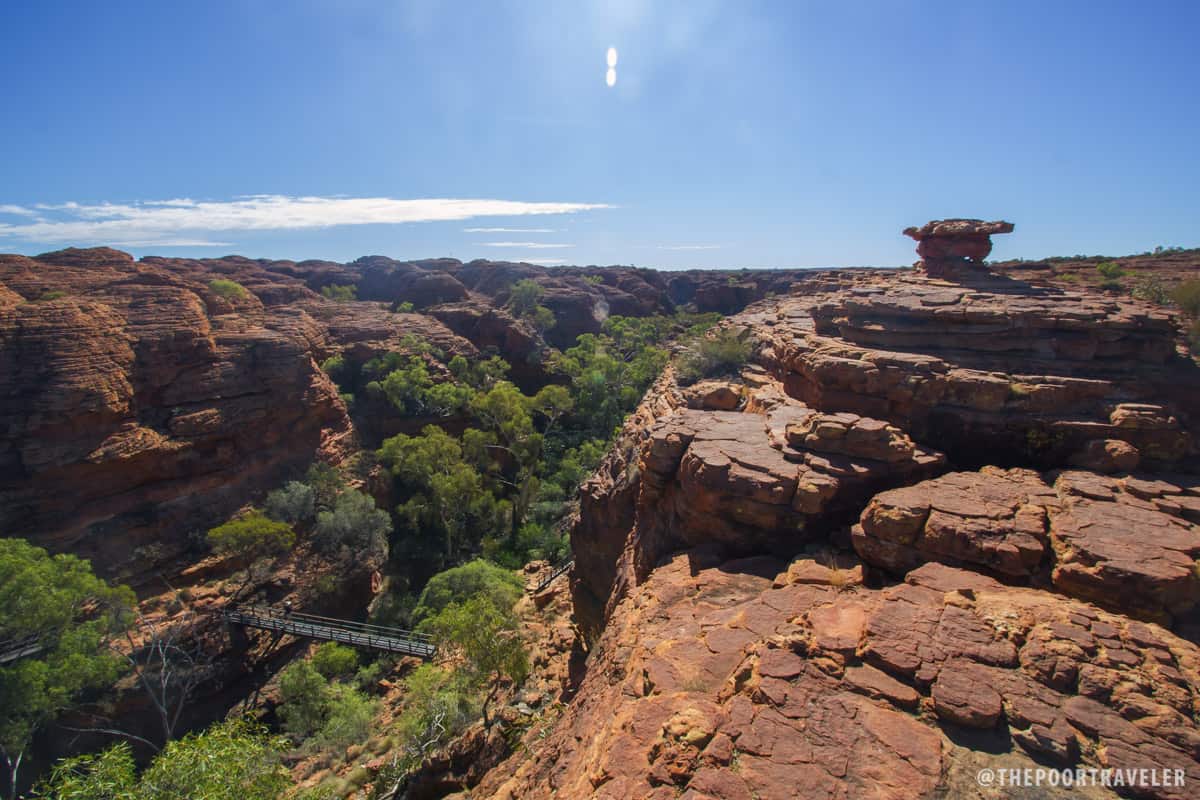
Three Trails
Situated halfway to Uluru from Alice Springs, the Kings Canyon is part of Watarrka National Park, covering 71,000 hectares of Australia’s Red Center. While it is often overlooked by tourists for the more famous Uluru, this landform still attracts over 250,000 visitors each year.
The site’s most prominent feature is its towering red sandstone cliffs, reaching as tall as 300m. Crumpling the western edge of the George Gill Range, these walls were a result of the erosion of small cracks in the land over millions of years. There are three walking trails that you may take to explore the site, depending on the time you have and how fit you are. Whatever you choose, it is important that you do not go off the trail for two reasons. First, some areas are considered sacred to the Aborigines. Second, it can get dangerous. Some hikers have perished at the site because of heart attack and falling off a cliff.
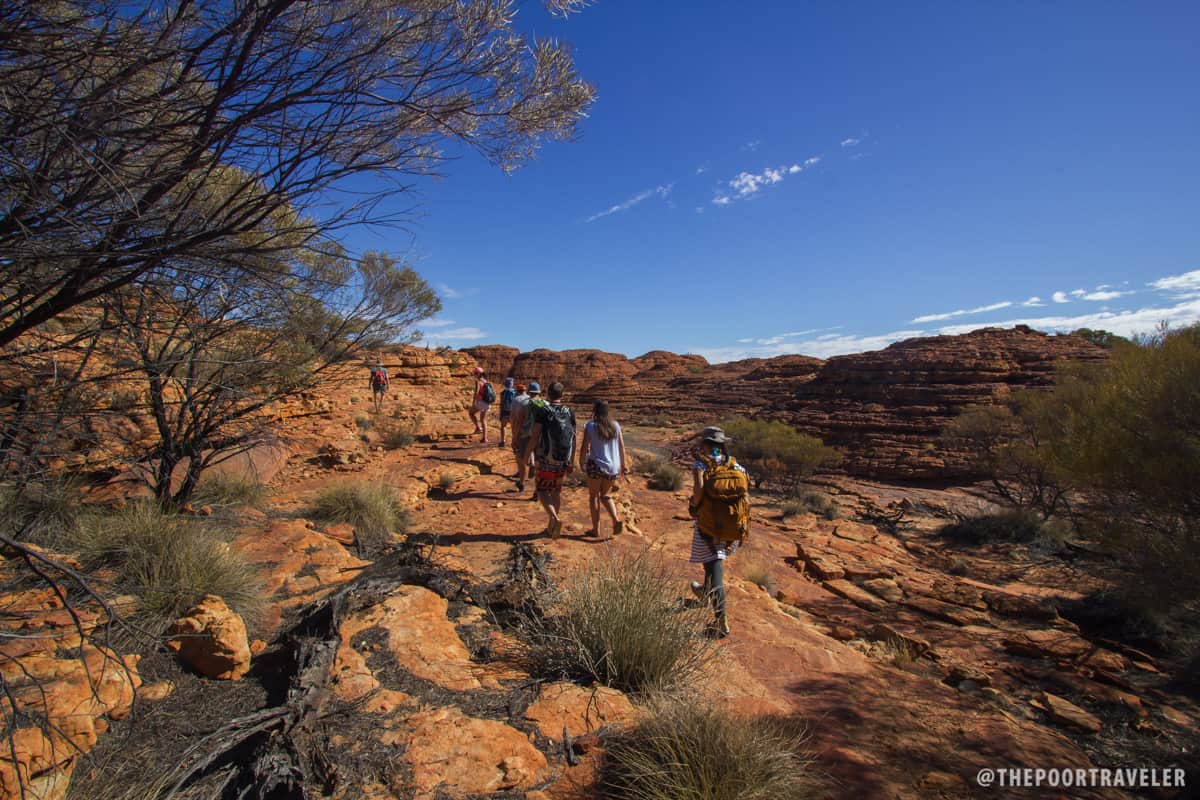
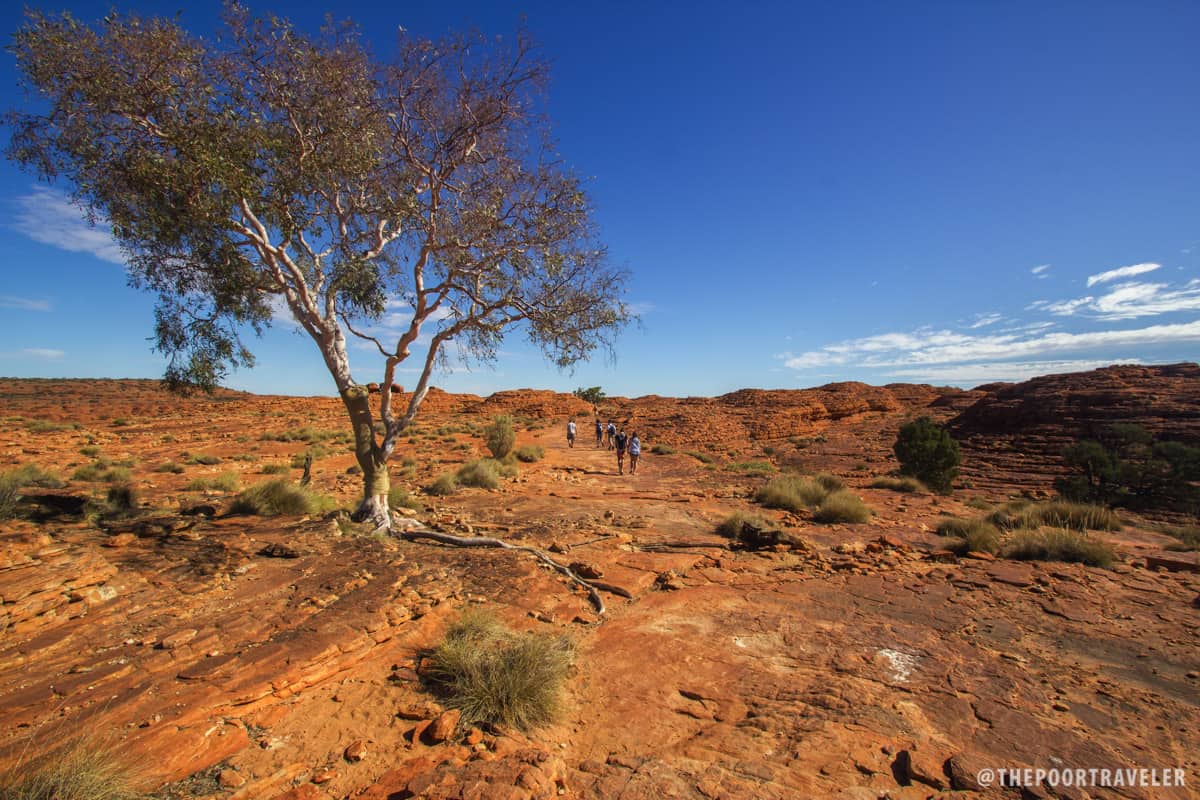
Kings Canyon Rim Walk. The full canyon experience which begins with the 500-step climb. This 6km path will take you into the gorge itself, over and along what they call “Garden of Eden” (a permanent waterhole), and across the weathered sandstone domes. If the temperature in Yulara breaches the 36-degree mark, you have to take the rim walk before 9am. Otherwise, the heat can become unbearable, pushing the authorities to block access after this time.
South Wall Return Walk. This is actually part of the Rim Walk loop. This will take you to the top of a cliff overlooking the Garden of Eden. Takes 1.5 to 2 hours. If the temperature is 36 or higher, you must take this trail before 11am.
The Kings Creek Walk. This 2-km trail follow the creek that snakes across the site. Takes an hour. The easy choice, it is suitable for anyone, regardless of age and level of fitness. It is also open all the time.
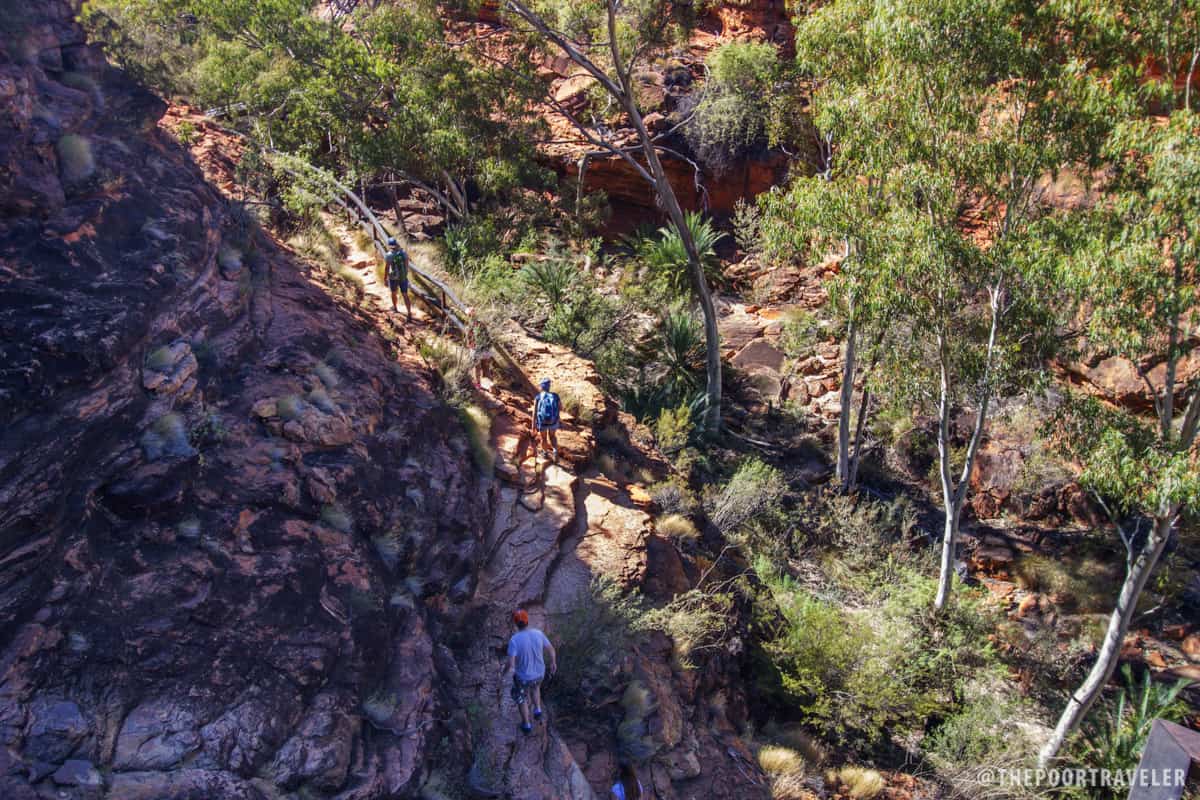
Rim Walk
We opted with the full rim walk experience, which began with a climb up a 500-stair hill, widely known among locals as “heartbreak hill” or “heart attack hill.” How fitting.
“We’re not even a quarter of the trail,” our tour guide Nick warned. “But don’t worry, that was the hardest part.”
True enough. It was a lot easier from there. We trod on rough grounds of a plateau, etched with what looked like ripples. It was as though the they were frozen in time. Before I could ask why, Nick already shared the answer. “This used to be underwater. These ripples are signs of an ancient sea that used to fill this area.” Apparently, these rocks used to be underwater sand, and they bear fossils of marine lifeforms, too. We looked around as we ambled, and in no time, we reached the first viewpoint, overlooking a red, rocky desert, partly patched with thin foliage.
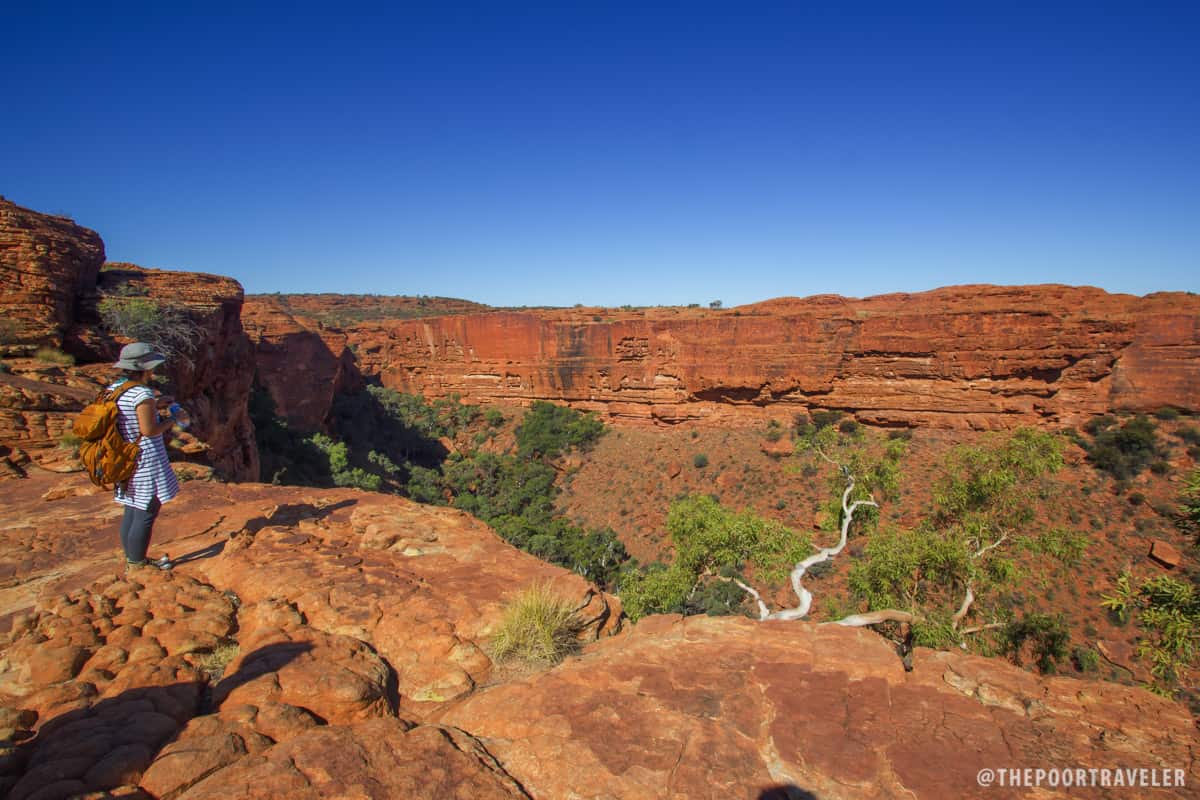
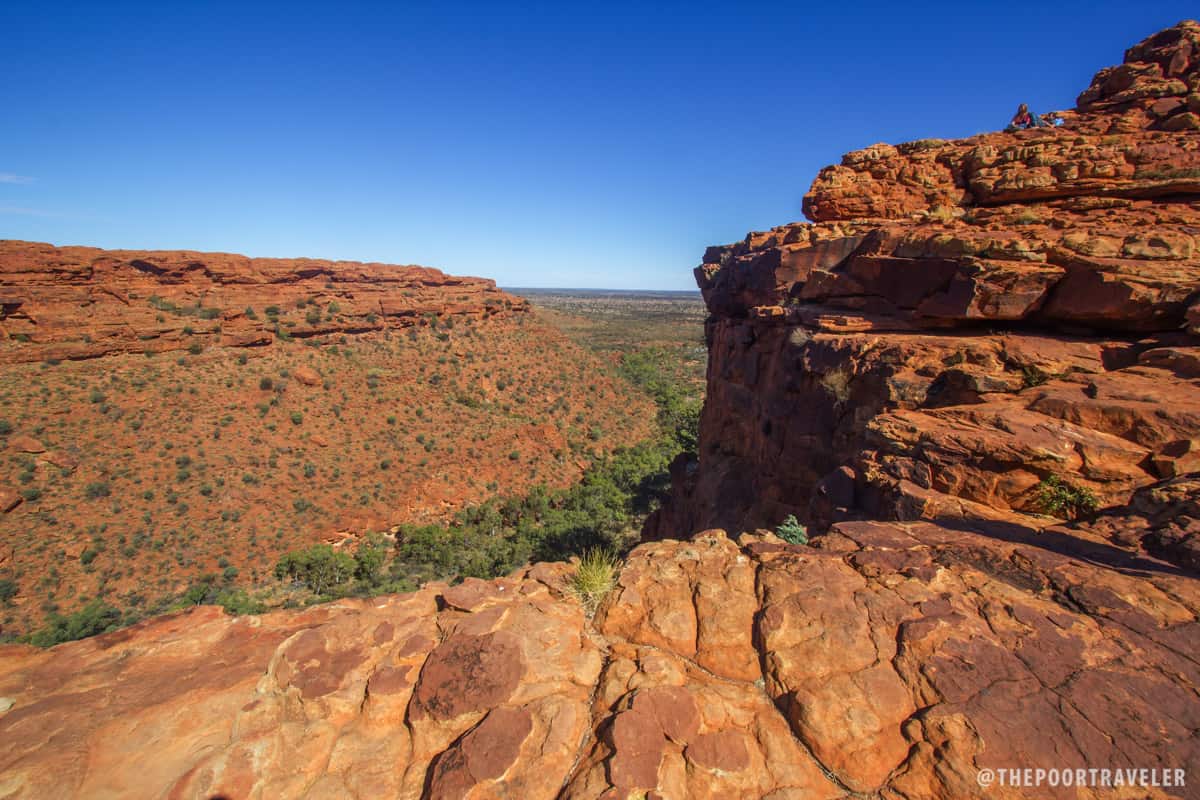
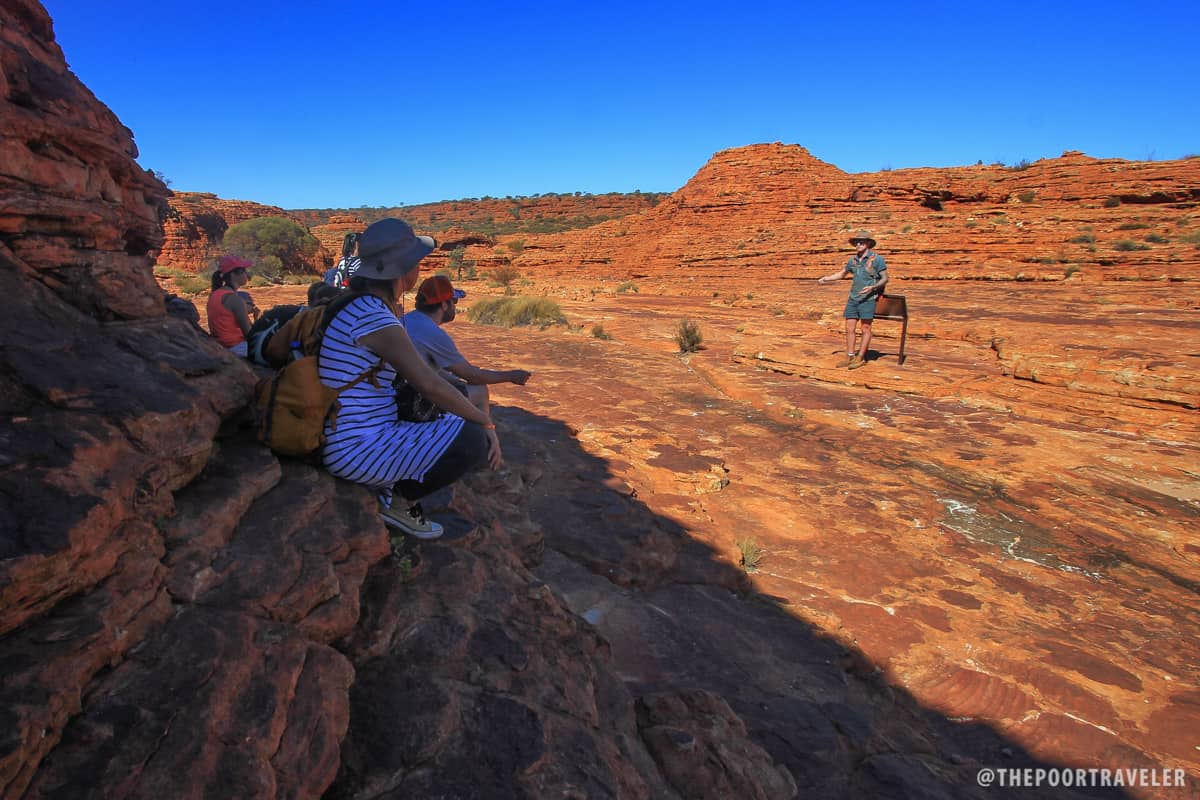
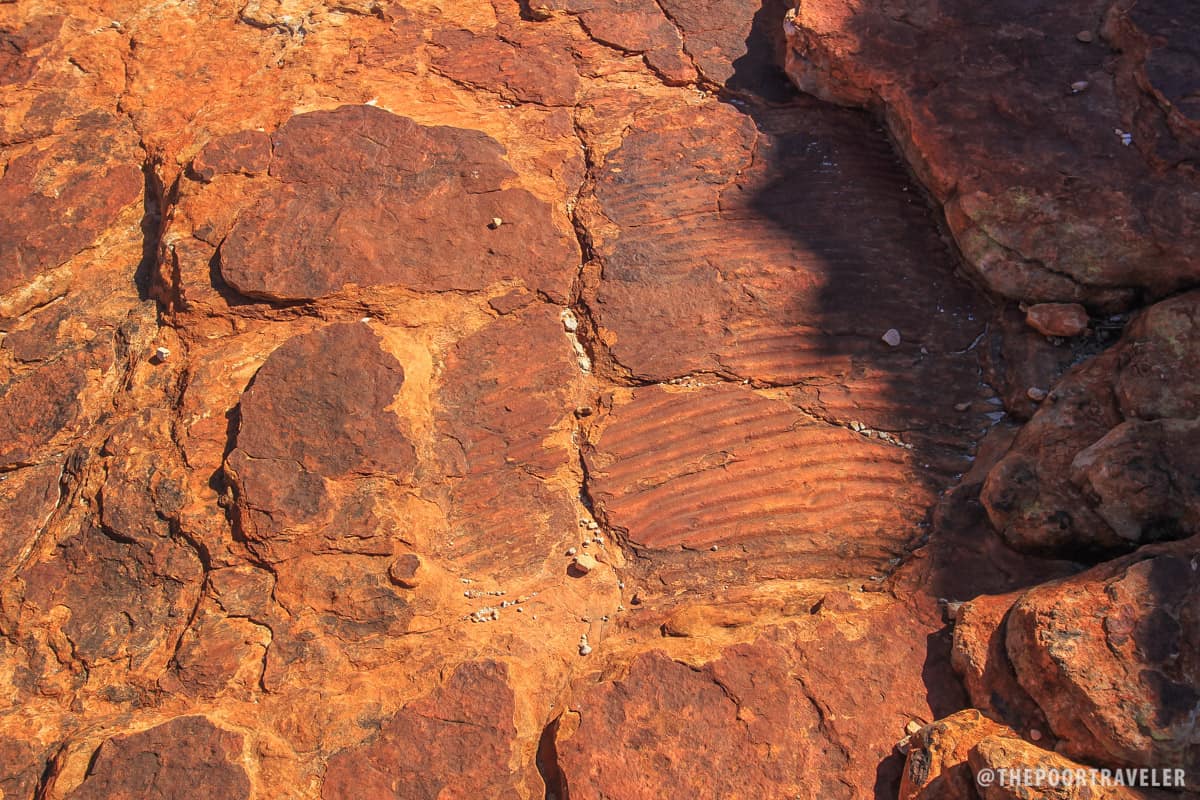
After minutes of walking under the sun and in between rocks, we reached a staircase that descends into the gorge, the bottom of which is covered in dense palm forest, broken by a meandering creek. “This is what many call the Garden of Eden,” explained Nick. It is a permanent waterhole, a life-saver for the aborigines and lost explorers in Australia’s early days. We walked along the creek and found its end. The waterhole is surrounded by soaring walls, keeping it away from harsh sunlight. It was refreshing to stay under its shade, a good resting place for hikers.
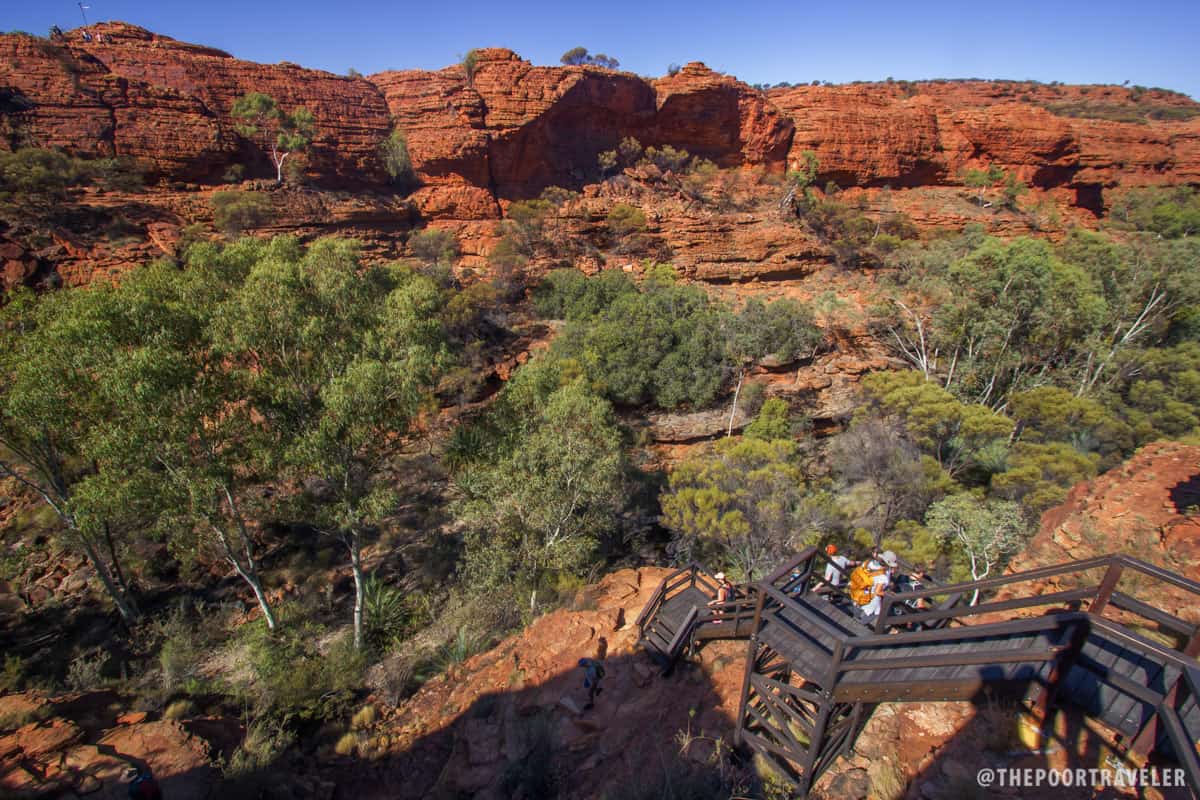
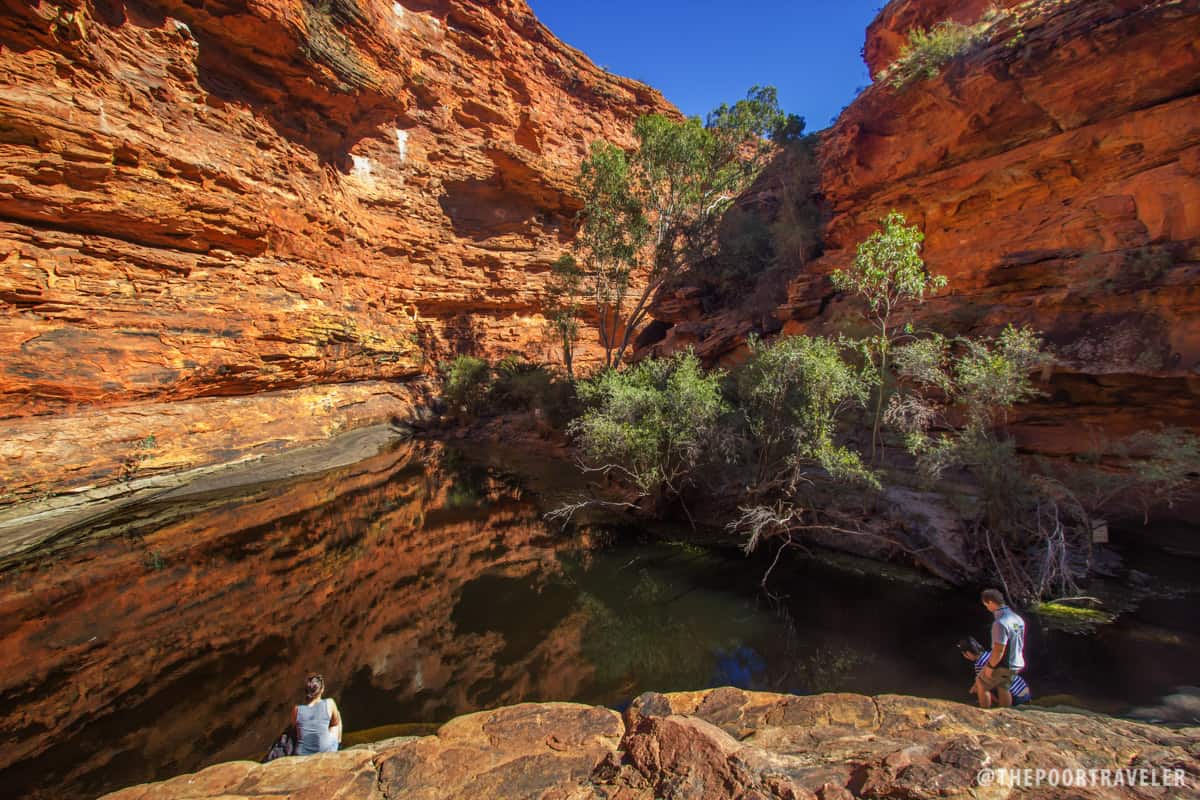
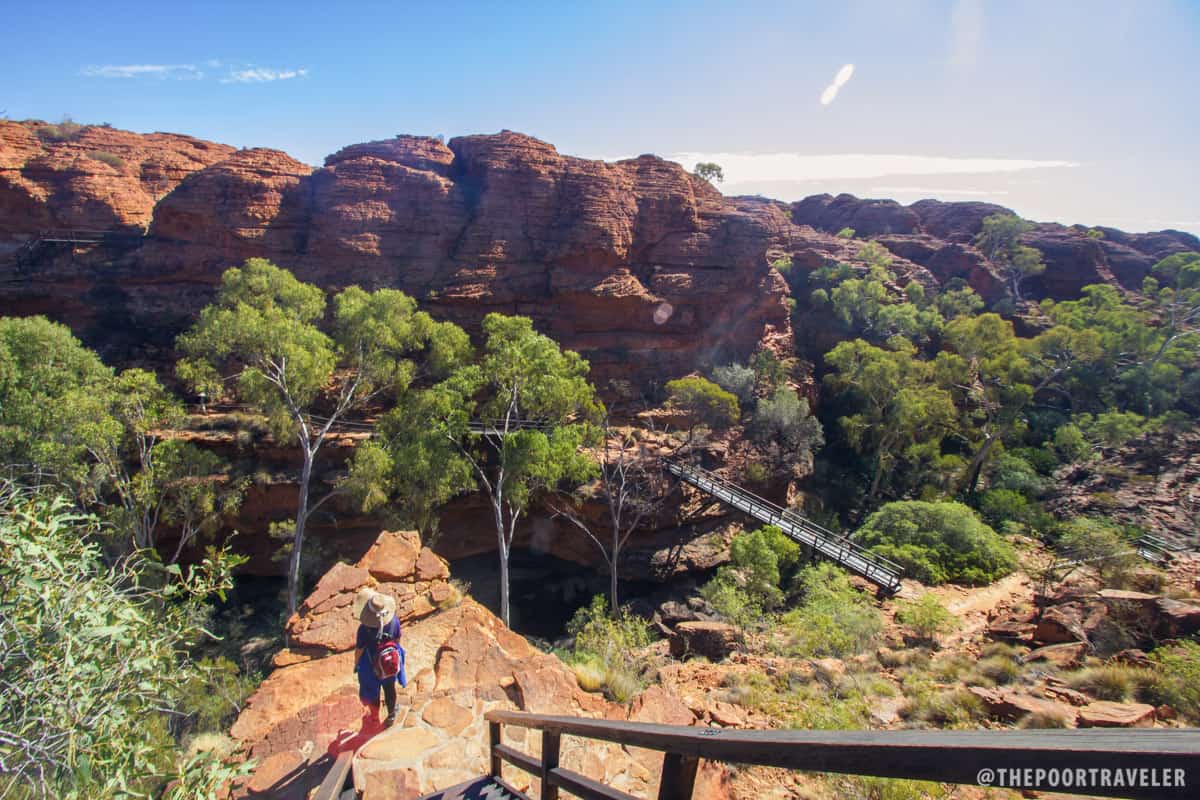
When we climbed back up to the other rim, we were greeted by a labyrinth of hundreds of weathered sandstone domes. Trees and shade were not aplenty, but it was an easy walk back to where we started.
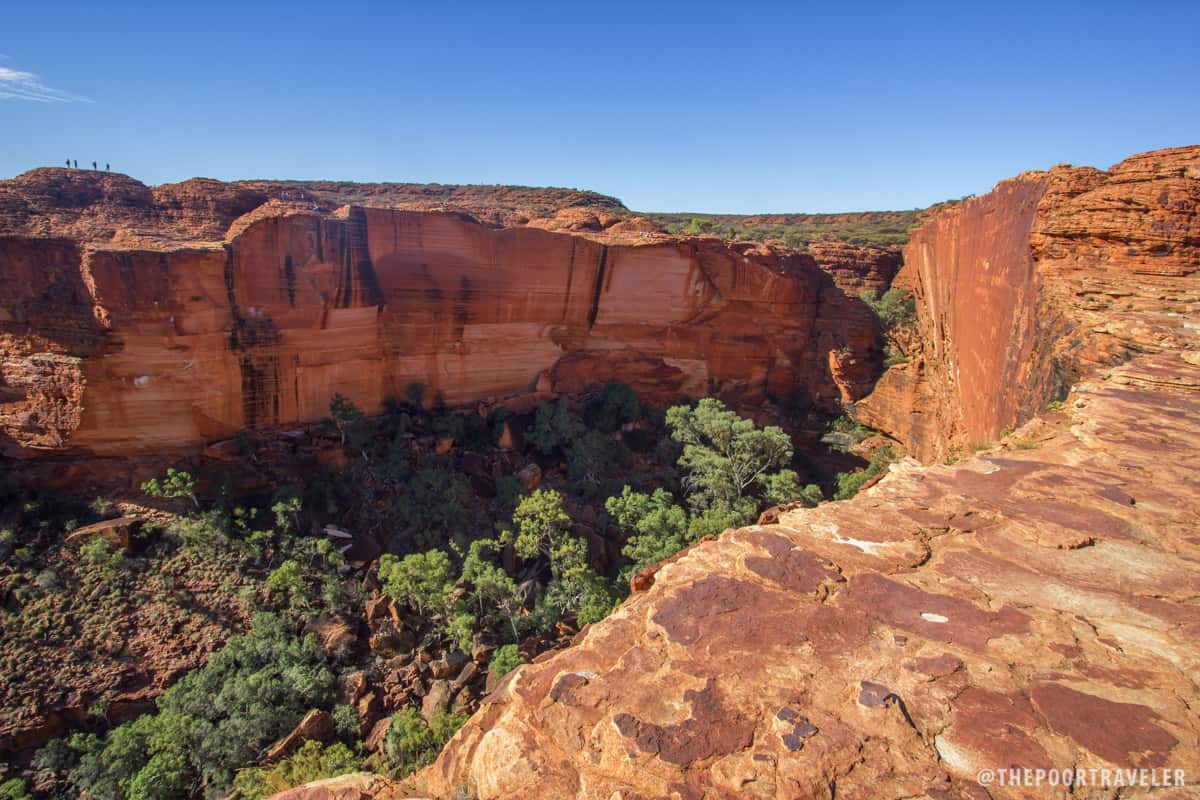
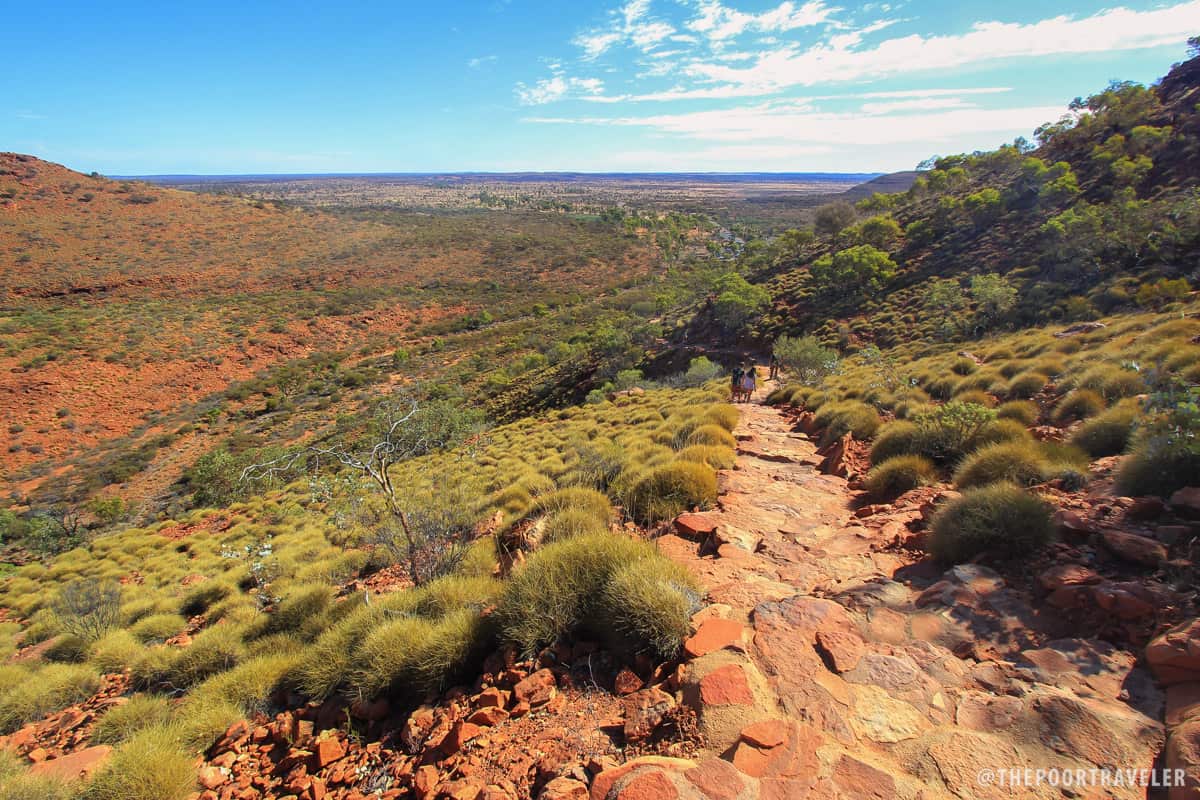
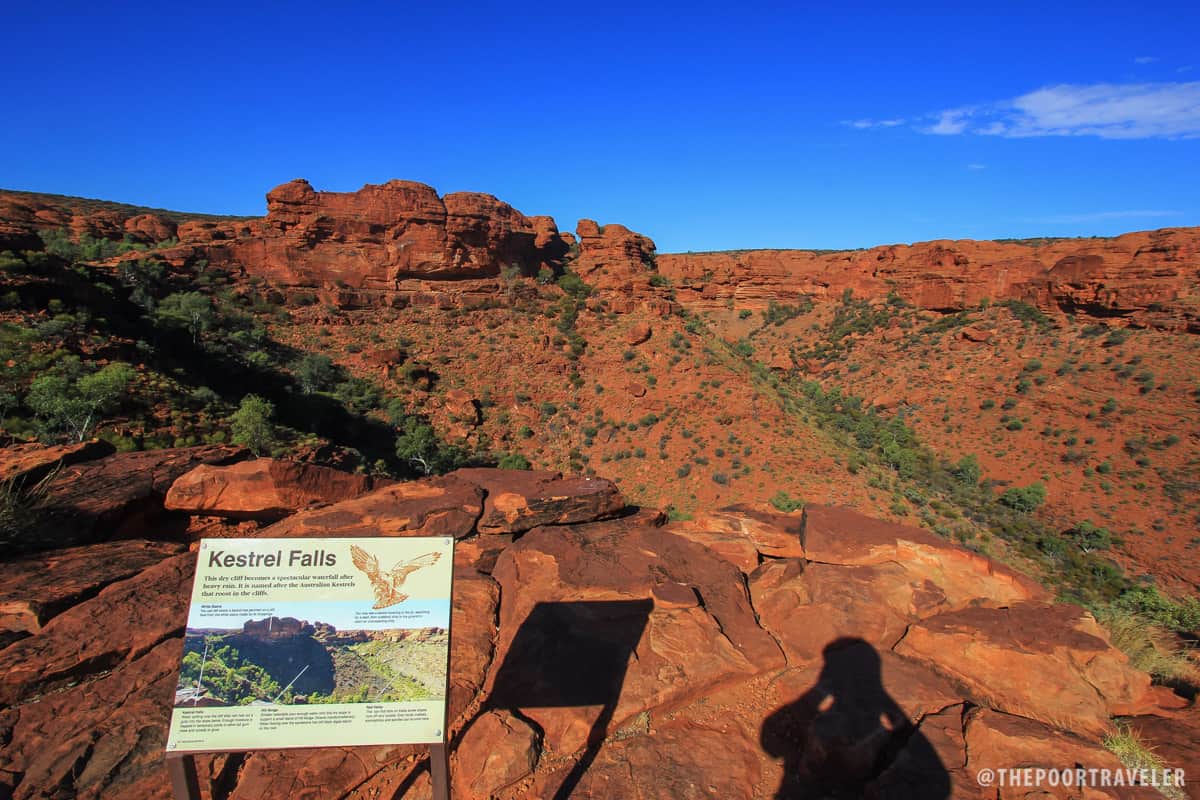
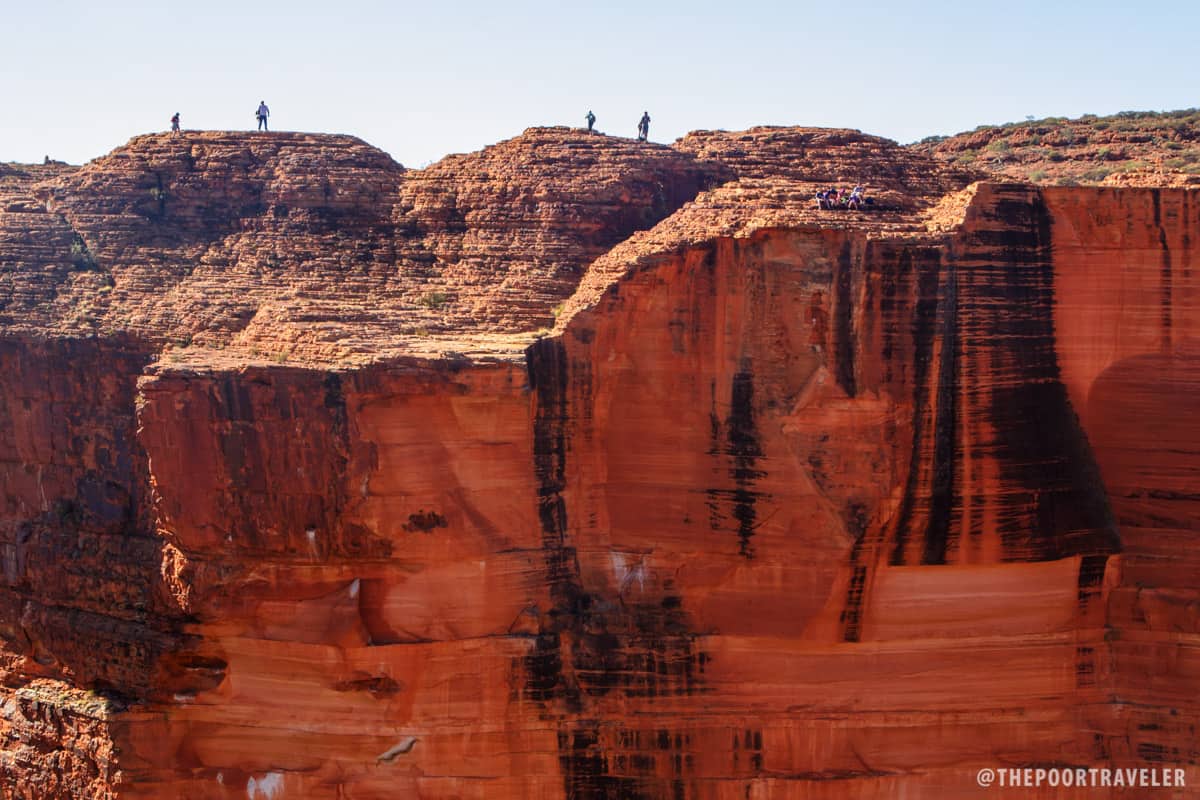
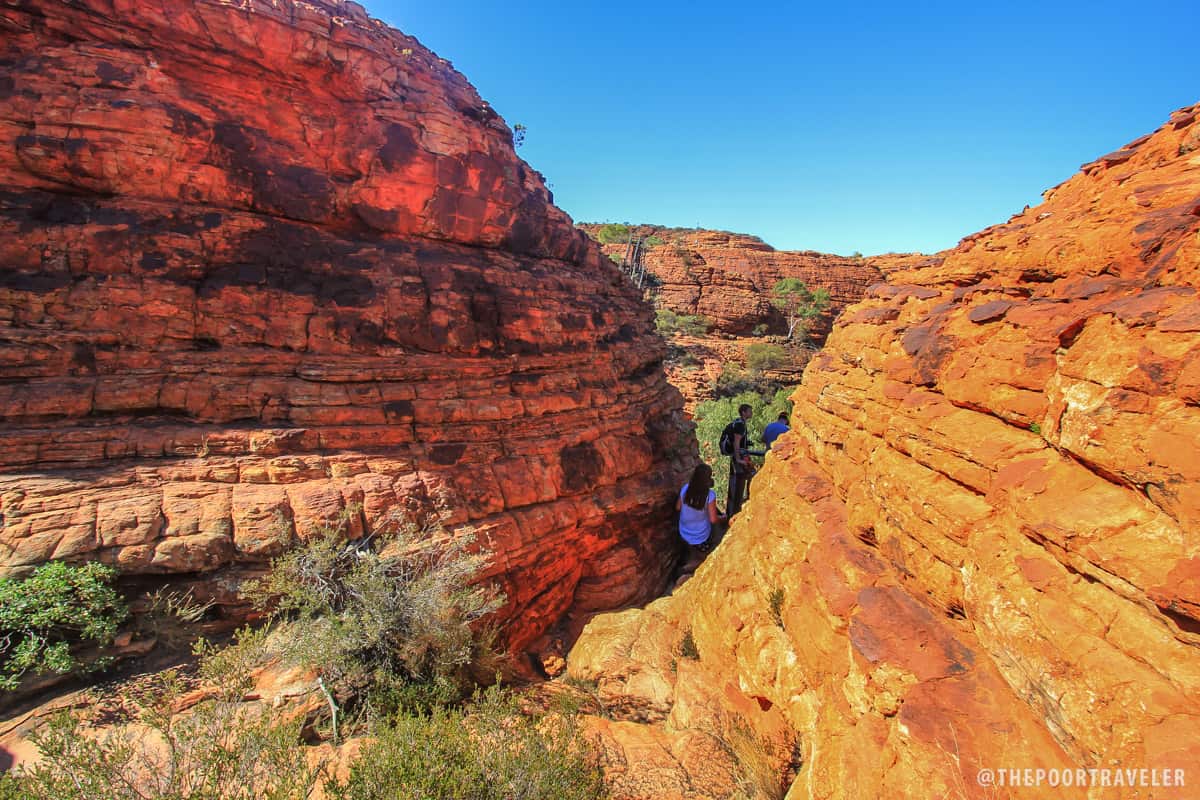
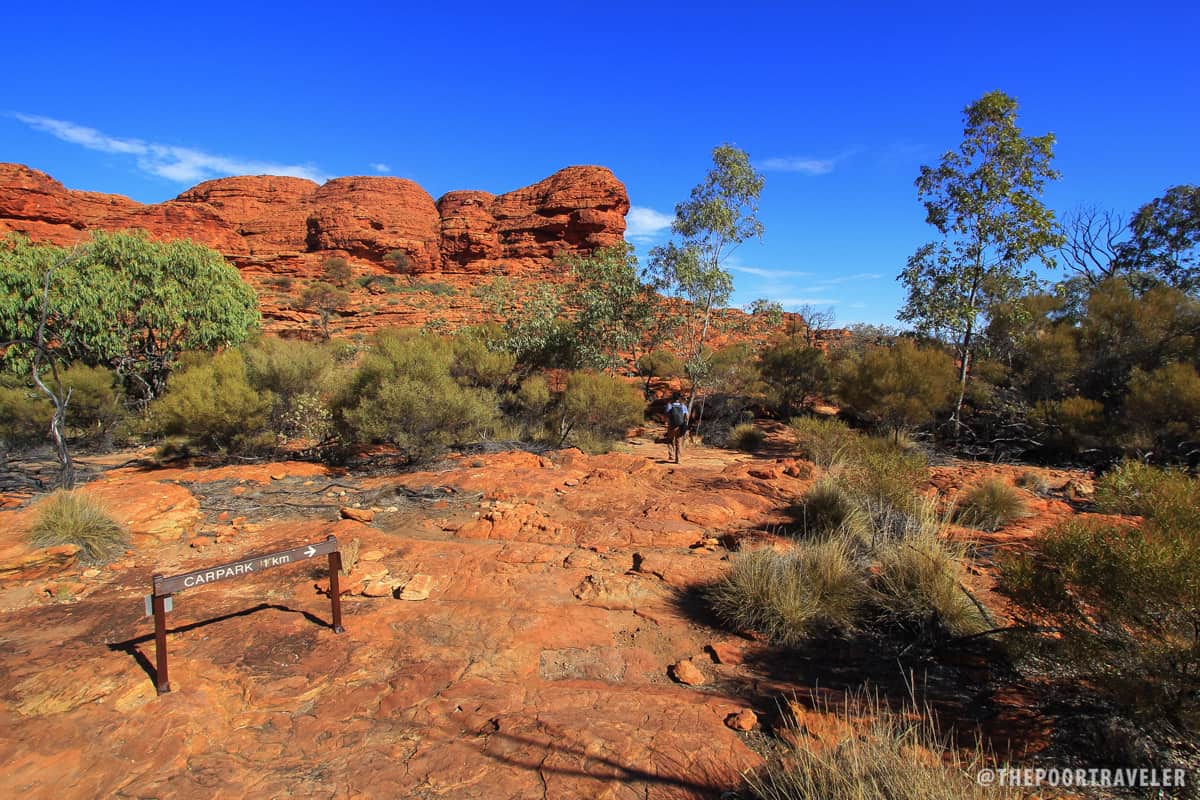
After almost four hours, I found myself at the base of the heartbreak hill, looking up to the summit. But with so much beauty presented to me, I barely remembered the struggle I went through climbing to that peak. Thank heavens I soldiered on, for what lingered as I stood there was the many shapes and forms of beauty that feasted my eyes on along the way. The real heartbreak would be missing all of it.
Watarrka National Park
Phone: +61 8 8956 7460When to visit: Accessible all year round, but best from April to September.
We visited Kings Canyon as part of a YHA tour package. It comes with 2 nights stay at Alice Springs YHA and a 3-day camping trip to Uluru courtesy of The Rock Tour, which makes a stop at Kings Canyon (Day 1), Kata Tjuta (Day 2) and finally Uluru (Days 2-3).
For more information or to book the tour, visit this site.
Where to stay: Ayer’s Rock YHA Hostel is also known as the Voyages Outback Pioneer Lodge or Outback Pioneer Hotel. They offer air-conditioned and wi-fi equipped rooms at the heart of Yulara Township. There’s a bar, a grill, and a lot of useful facilities on site. There’s also a viewing deck for Uluru sunset within the vicinity.
Book your room here
.
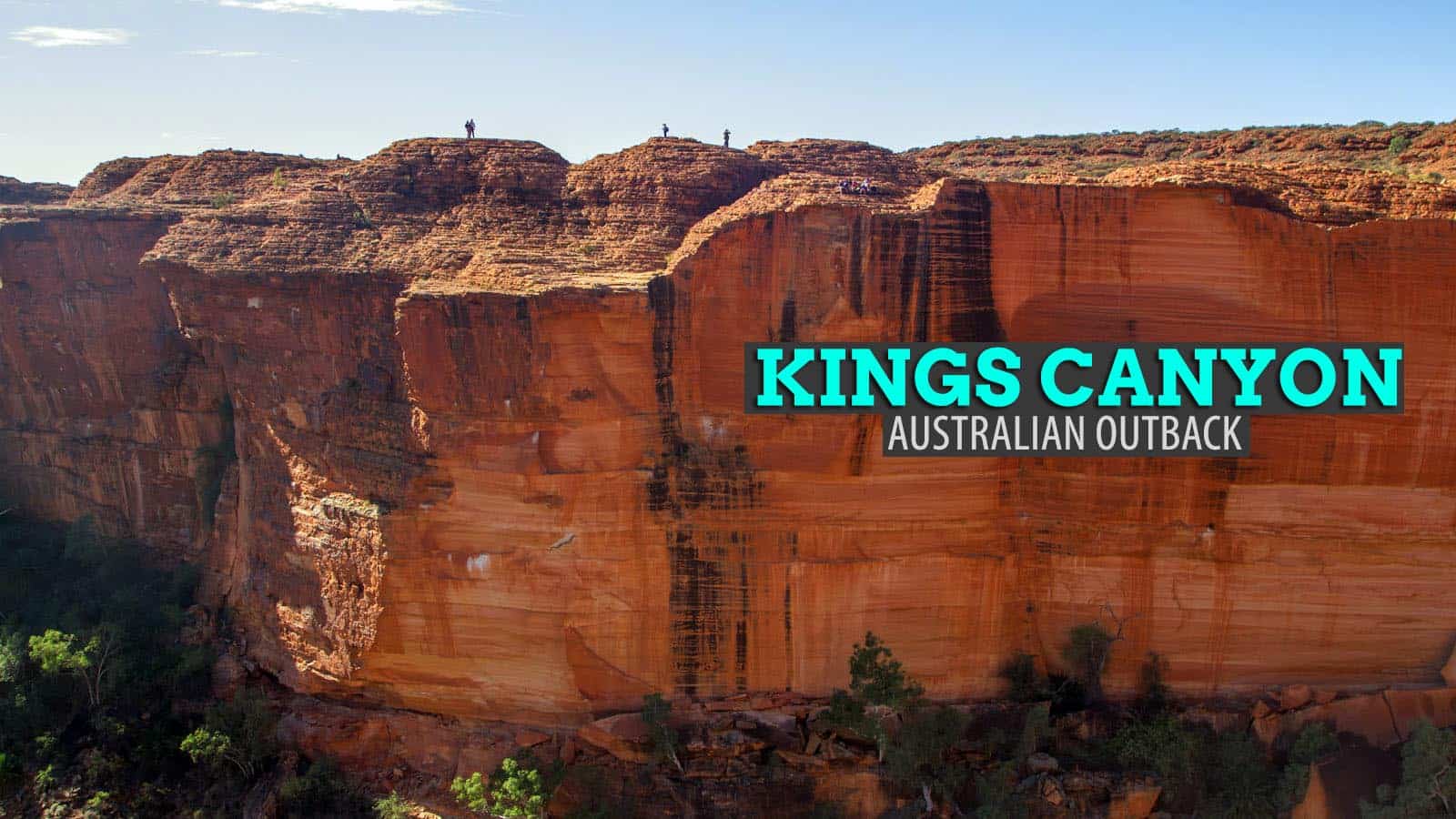



 We visited Kings Canyon as part of a YHA tour package. It comes with 2 nights stay at Alice Springs YHA and a 3-day camping trip to Uluru courtesy of The Rock Tour, which makes a stop at Kings Canyon (Day 1), Kata Tjuta (Day 2) and finally Uluru (Days 2-3).
We visited Kings Canyon as part of a YHA tour package. It comes with 2 nights stay at Alice Springs YHA and a 3-day camping trip to Uluru courtesy of The Rock Tour, which makes a stop at Kings Canyon (Day 1), Kata Tjuta (Day 2) and finally Uluru (Days 2-3). Where to stay: Ayer’s Rock YHA Hostel is also known as the Voyages Outback Pioneer Lodge or Outback Pioneer Hotel. They offer air-conditioned and wi-fi equipped rooms at the heart of Yulara Township. There’s a bar, a grill, and a lot of useful facilities on site. There’s also a viewing deck for Uluru sunset within the vicinity.
Where to stay: Ayer’s Rock YHA Hostel is also known as the Voyages Outback Pioneer Lodge or Outback Pioneer Hotel. They offer air-conditioned and wi-fi equipped rooms at the heart of Yulara Township. There’s a bar, a grill, and a lot of useful facilities on site. There’s also a viewing deck for Uluru sunset within the vicinity. 




















Haha wow eto na mga peg niya ngayon ate?